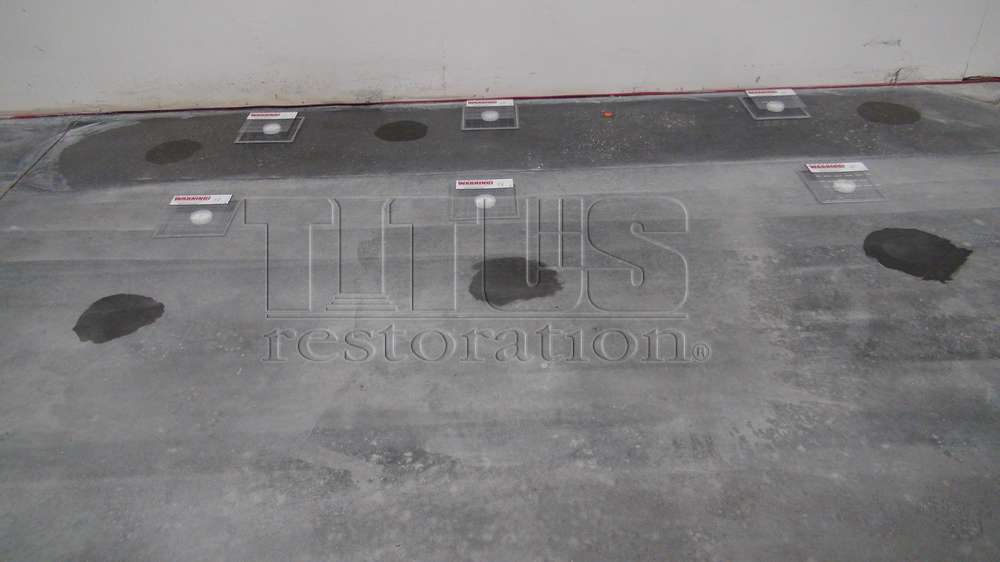Concrete loses moisture from the moment it is poured for several years down the road. Testing this moisture transmission can be the difference between a success or a failure in your flooring project. Understanding the various concrete moisture testing methods as defined by ASTM is key in a successful project.
Introduction to Concrete Moisture Testing
Below are several ASTM moisture tests for concrete The first ASTM standard that is listed is ASTM E 1907. This is a compilation of the ASTM standards for moisture testing. The most current version of these tests can be purchased online from ASTM.org or ANSI.org.

Calcium Chloride Moisture Test
ASTM E 1907 – Summary
This document lists several moisture tests for concrete. It includes both quantitative and qualitative tests to determine the amount of moisture coming from a concrete slab. A qualitative moisture test, such as ASTM D 4263, the plastic sheet test, simply indicates that moisture is present. It does not indicate how much moisture is present. A quantitative moisture test indicates the amount of moisture present. Calcium chloride and the INSITU relative humidity test are quantitative tests.
All floor finishes should follow the manufacturer’s moisture testing guidelines, this includes, but is not limited to: carpet, wood flooring, vinyl floor or linoleum, quarry or ceramic tile, stone, and paints (coatings), etc.
While the above floor finishes may not be specifically listed in a standard, the manufacturer may have incorporated that standard into its installation requirements. It is very important that not only the paragraphs of the standard be followed, but almost all standards incorporate by reference other standards, and those too must be followed.
Titus recommends referring to the flooring manufacturer for concrete moisture testing methods, including following all referenced documents either in the manufacturer’s literature or referenced documents incorporated therein. The following is a list of the moisture tests listed in ASTMPractice F 710.
- ASTM D 4263 – Polyethylene Sheet Test
- ASTM F 710 Practice for Preparing Concrete Floors to Receive Resilient Flooring
- ASTM F 1869 – Test Method for Measuring Moisture Vapor Emission Rate of Concrete Subfloor Using Anhydrous Calcium Chloride
- ASTM F 2170 – Test Method for Determining Relative Humidity in Concrete Floor Slabs Using in situ Probes
- ASTM F 2420 – Test Method for Determining Relative Humidity on the Surface of Concrete Floor Slabs Using Relative Humidity Probe Measurement and Insulated Hood
- ASTM F2659 – Non-Invasive Meter
- The following link is very useful in summarizing these tests and procedures. https://www.sportsbuilders.org/events/presentations/sanantonio2013_2D_Concrete%20Moisture%20Testing.pdf
- ASTM D 4259 Practice for Abrading Concrete
